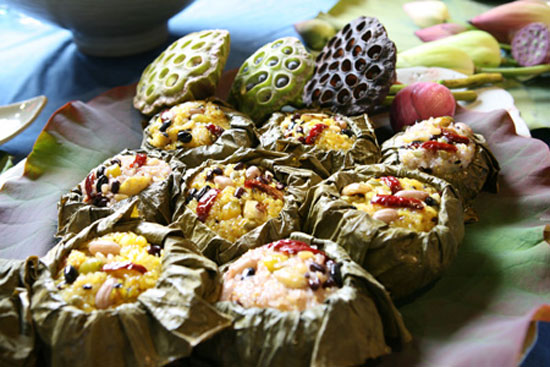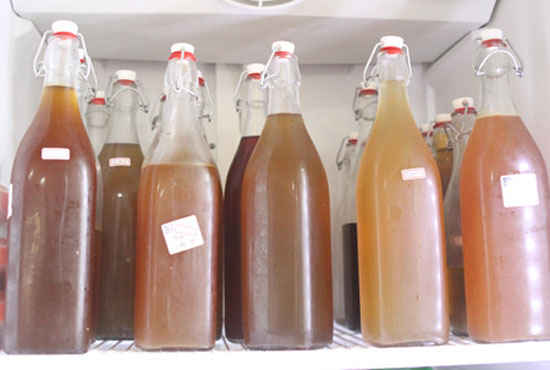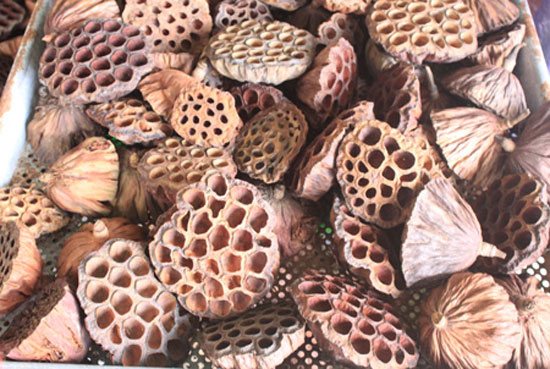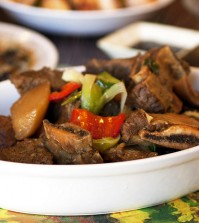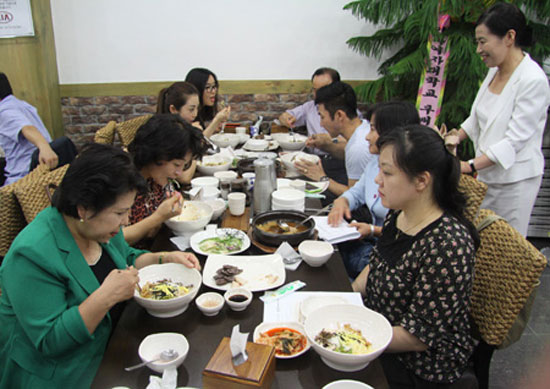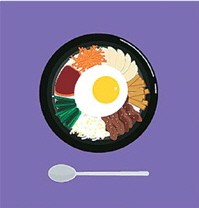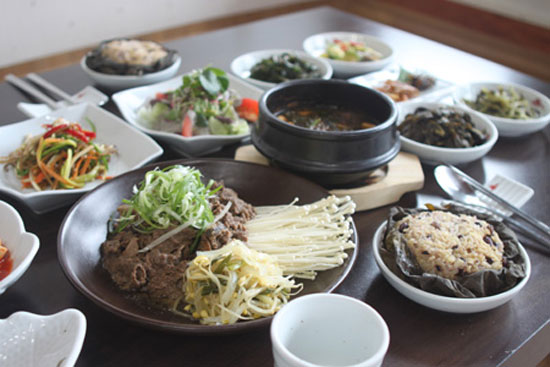- California Assembly OKs highest minimum wage in nation
- S. Korea unveils first graphic cigarette warnings
- US joins with South Korea, Japan in bid to deter North Korea
- LPGA golfer Chun In-gee finally back in action
- S. Korea won’t be top seed in final World Cup qualification round
- US men’s soccer misses 2nd straight Olympics
- US back on track in qualifying with 4-0 win over Guatemala
- High-intensity workout injuries spawn cottage industry
- CDC expands range of Zika mosquitoes into parts of Northeast
- Who knew? ‘The Walking Dead’ is helping families connect
Serving lotus, from flower to seed
Korean restaurant in Andong cooks up food that purifies, calms minds
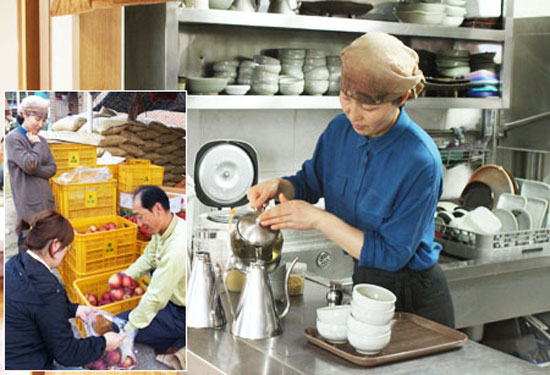
Shin Yun-nam, owner and chef of “Andong Hwaryeon,” serves lotus tea, at her restaurant in Andong, North Gyeongsang Province. Inset photo shows her husband Kang Wha-soo selling apples to neighbors that the couple grew.
/ Korea Times photos by Park Jin-hai
By Park Jin-hai
“Lotus flowers blossom out of muddy water. In doing so, it purifies the water where it lives,” said Shin Yun-nam, restaurant owner of “Andong Hwaryeon,” in North Gyeongsang Province.
The name “hwaryeon” means lotus flower.
“Like the flower, I would like to serve food that purify and calm people’s minds,” the 45-year woman says softly as she places food onto the porcelain platter which has a lotus flower on its corner.
Her husband Kang Wha-soo, 49, quietly polishes a metal tea kettle and sprinkles ground sesame onto the food. The way the couple prepares the food looks like a ritual.
As one steps into the restaurant, one cannot help but notice that everything, from the food to the tea to the decorations, seems to have come from the lotus plant.
The restaurant’s main dishes ― lotus-leaf-wrapped rice and salted mackerel ― use lotus leaves. Its root is served as a side dish, while its leaves are also made into a wide range of products like tea, yeast extract, liquor and rice cake. The leftovers produced from tea- and yeast-making are used as compost to grow apples. Even the pink dye used for the sitting mat covers comes from the flowers.
The lotus plant is known to ease anxiety, stress and promotes healthy liver functions. “The lotus plant has lots of medicinal benefits. It lowers your blood pressure as well as helping shed fat. When used in growing apples on my farm, they work as a natural preservative as well,” said Kang.
Opening in 2010, the restaurant’s pride is its natural ingredients. Every season Kang goes up to the hill tops and fields to collect the finest wild flowers and makes them into yeast extract. His wife uses them in her dishes and boils tea from them.
According to her husband, more than 80 percent of what they put on the table comes from their field.
Shin says making lotus leaf wrapped rice is a long process that requires more than six hours, since rice should be soaked in water for at least five hours in advance.
“The rice is mixed with five different grains and is first steamed in lotus leaf for 20 minutes. Yeast extract is added, as well as lotus root, dried jujube and gingko nut, and the rice then gets wrapped and steamed for another hour until it is yellowish in appearance and has the full lotus fragrance,” Shin said.
“The lotus flower’s scent is strongest when it is picked right after its first blossom closes at dusk,” she added.
The couple settled in the rural village in 2007 with the dream that they would grow their own food.
Kang, who worked as a middleman in Seoul, connecting organic farms and distributors including Shinsegae Department store, had been interested in growing food with less-or-no pesticides from early on. “When I was in the business, people had no idea what organic food was,” he said.
However, his dream-come-true has made his wife’s life harder. Not only was it physically challenging, the economic issue was big as well. “The whole family has worked in the field all year round under the sun. But the income we got from it was, say, about the amount that barely meets the annual salary of a city dweller,” said Kang.
“The life we were living wasn’t exactly what we were expecting. Coupled with other things, I was having a hard time. That’s when I met a Buddhist monk, who taught us all about the lotus plant, which we later named our restaurant after,” said Shin.
She said that thanks to the lotus plant, she has regained peace of mind. “I serve food wishing that through my food fatigued souls can have the feeling that they are being treated warmly,” said Shin.
For more information, visit its website at lotusapple.com.








